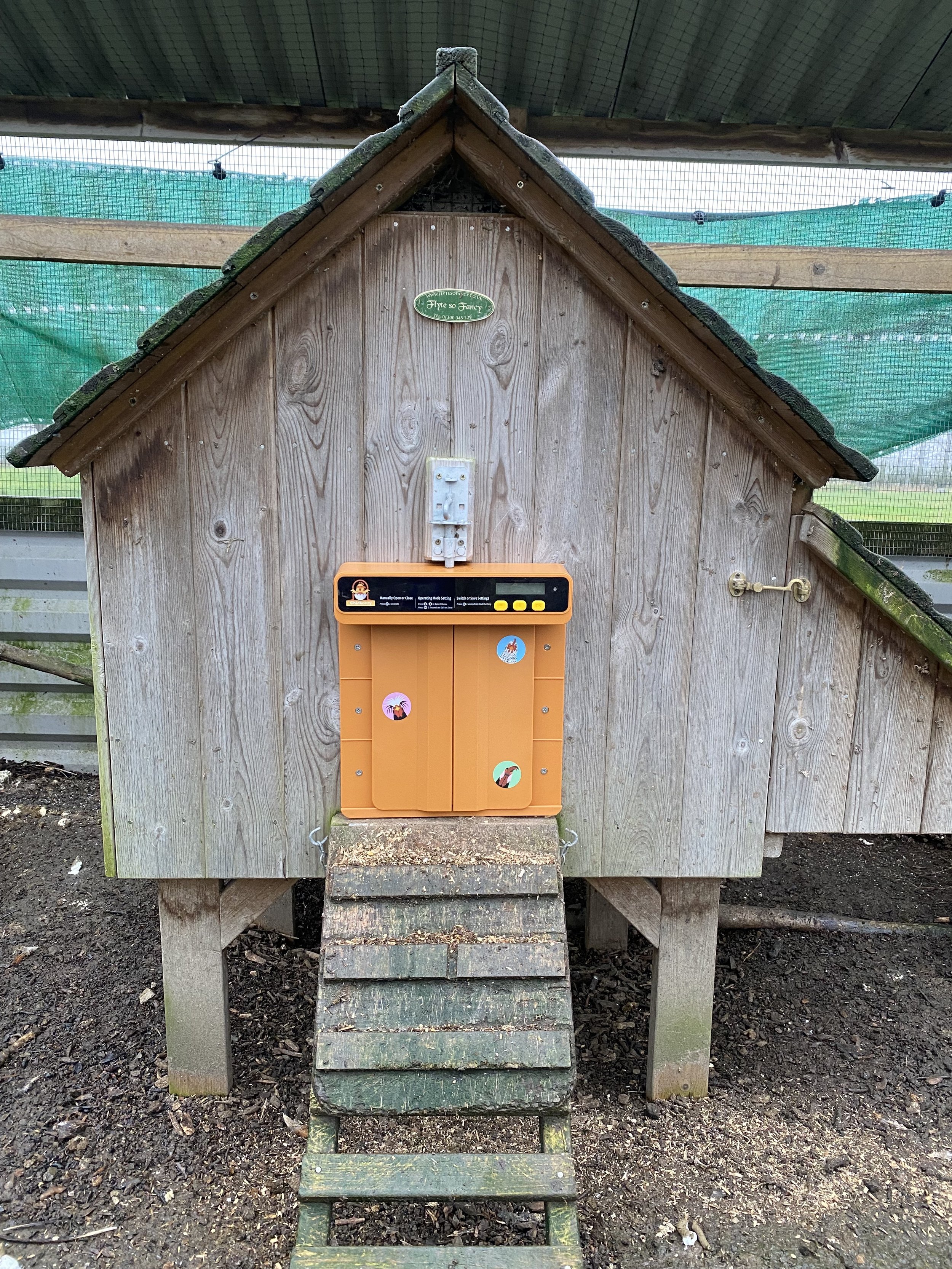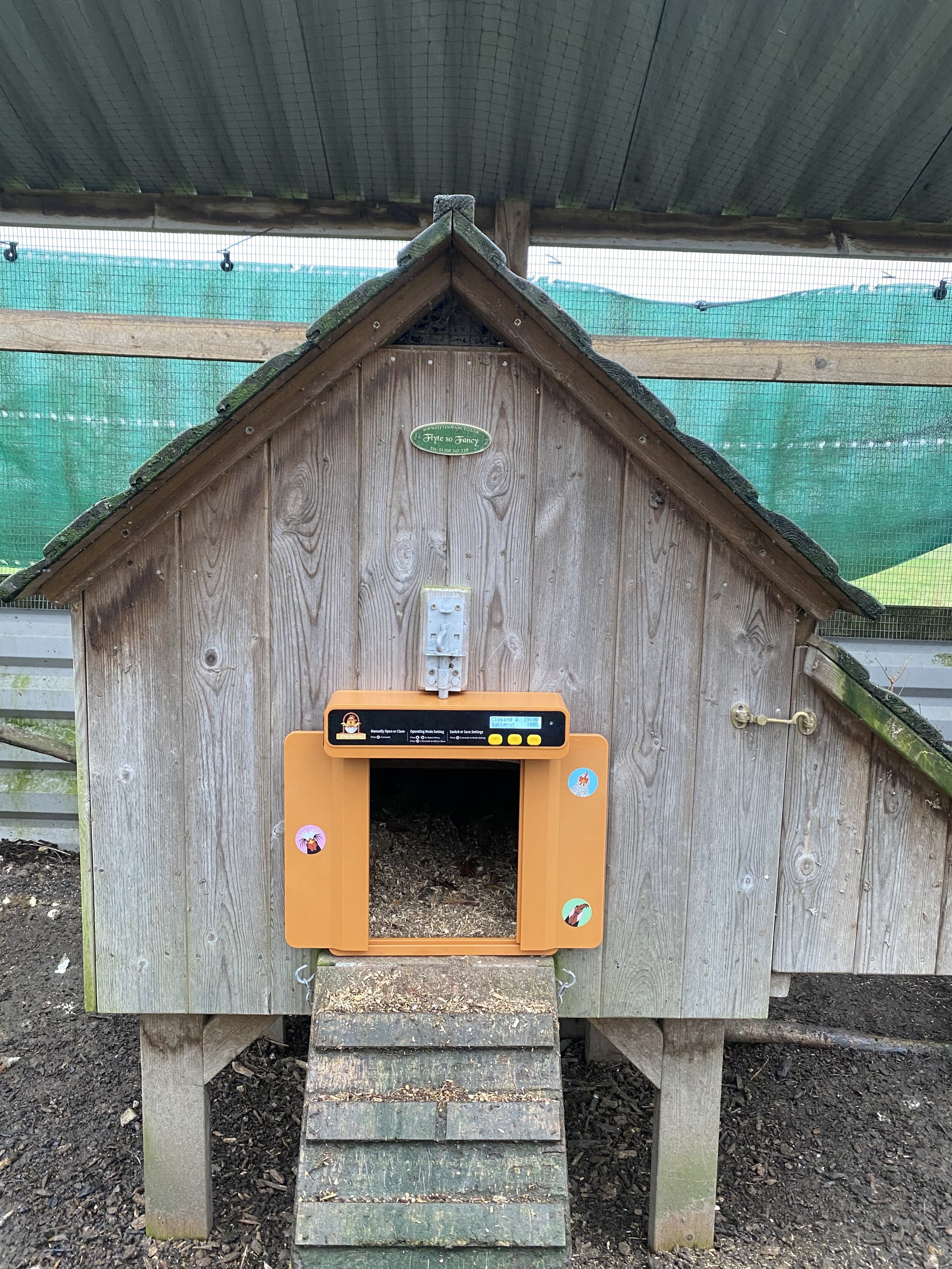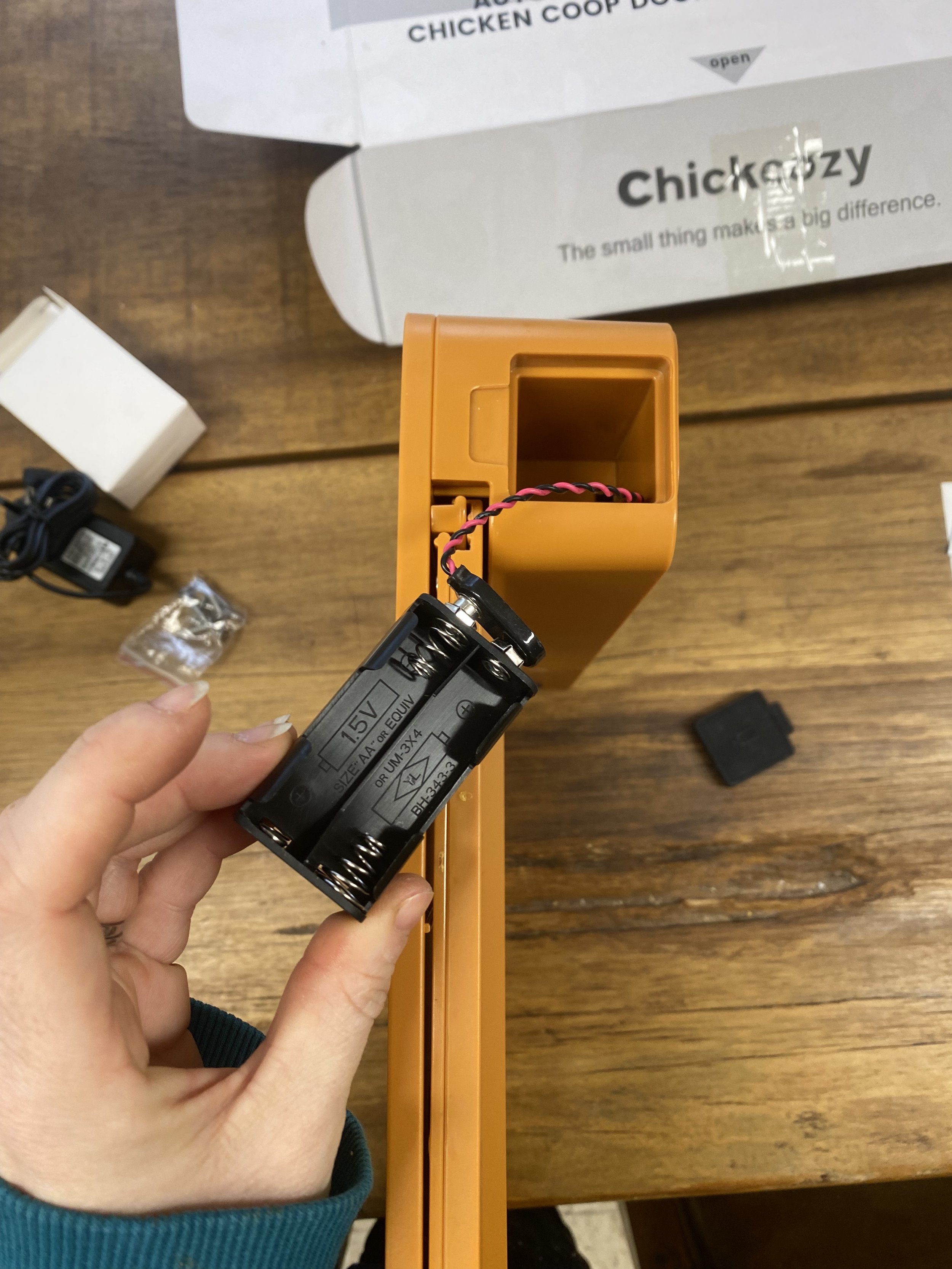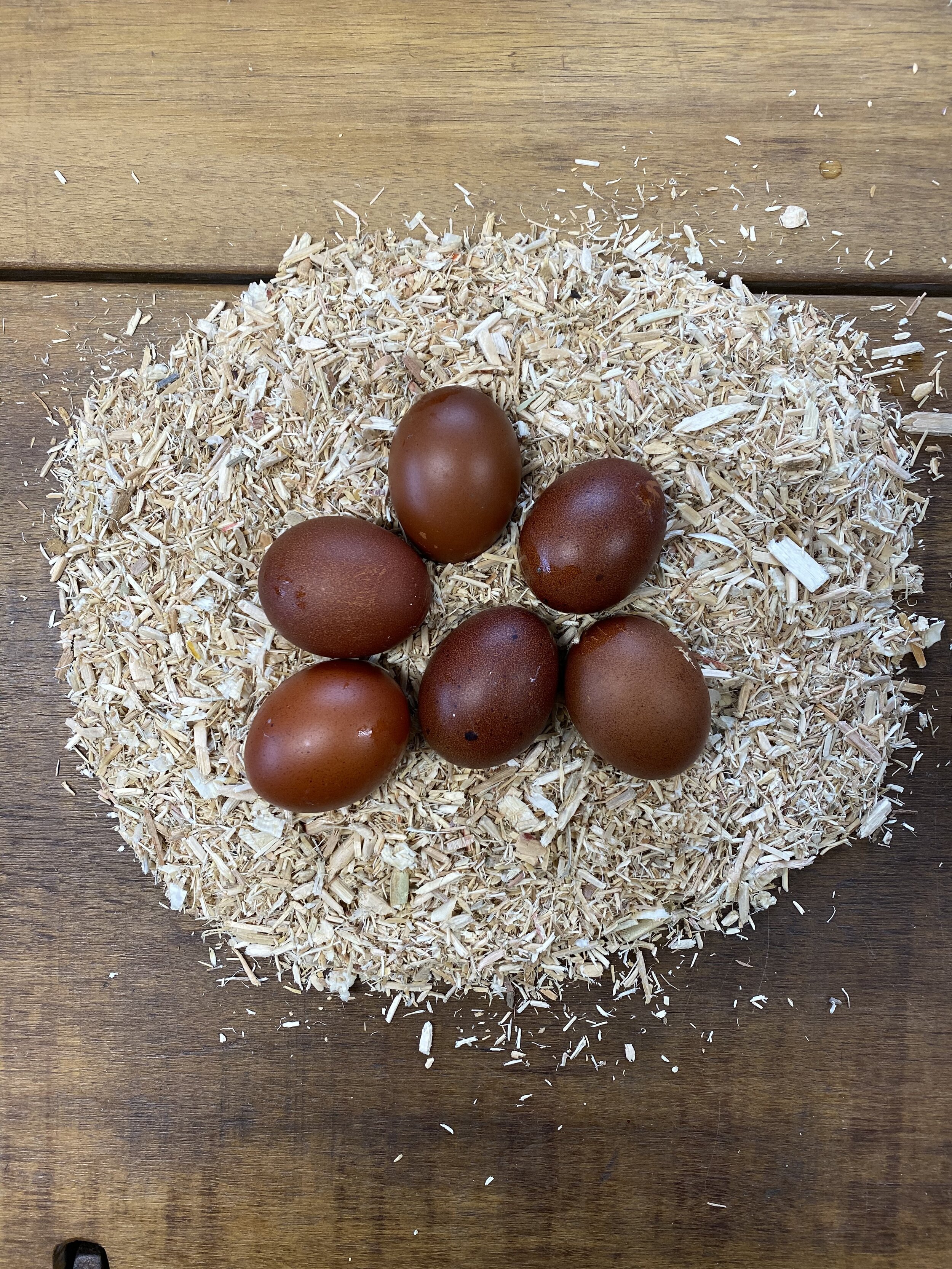I honestly don’t know how I’d be without any form of automatic door for our hens! There’s nothing nicer than knowing that first thing in the morning the hens are going to be mooching about without you having to lift a finger. We’ve been super lucky to be sent a Chickcozy Automatic Chicken door to try and see what we think!
They offer their door in two colours; Lime Green and Dark Goldenrod. We opted for the lovely golden colour, I’m hoping it manifests into the hens to create beautiful yolks! I also absolutely love that the door comes with it’s own chicken stickers to personalise your door too!
Most of our coops are for 50 hens or more, so this style door wouldn’t work for those as the doors that come on the coop are much wider than what the Chickcozy would fit. But let’s be honest, not too many people who are looking for an automatic door have coops that size. We tried our Chickcozy door on one of our smaller coops that fits 10 hens. Alternatively, it’s a great choice if you’re building your own coop, then you can create a hole that is the perfect size for the Chickcozy automatic door opener.
The door is operational by using batters, which are provide, or by using the mains. We opted for the battery operation. There’s a small battery slot on the top left of the door on the side. You can pop this open, remove the battery pack, load it up with new batteries, click it back in and off you go. A really easy process. The door has a small LED screen where it tells you the percentage of the battery, so you’ll never been caught with having a flat battery and a door that doesn’t open or close!
Installation Made Easy:
Installing the Chickcozy Automatic Chicken Coop Door is a breeze, thanks to the comprehensive fitting instructions provided. It's crucial to follow these instructions diligently, ensuring the correct placement of the door on the coop. The manufacturer emphasises leaving a 2-inch gap from the base of the coop as this prevents dirt, debris, and moisture from accumulating at the base of the door, reducing the risk of damage to the door mechanism. I’d still recommend ensuring that the channel at the base of the door is clear each day.
Efficient Automation:
One of the standout features of the Chickcozy Automatic Chicken Coop Door is its automation capabilities. The door is equipped with a reliable timer and light sensor, allowing for seamless opening and closing based on your preferred schedule or the natural light conditions. This feature not only ensures the safety of your hens but also saves you the hassle of manually managing the coop door daily. Although, there is a manual option if you choose to control when your hens make an appearance.
Overall this is a really handy, lovely looking automatic door that will save you a lot of hassel in the mornings and evenings. It’s really simple and easy to use and it’s bright colours will bring joy to your coop and more vitally, keep your hens nice and safe from predators!



















